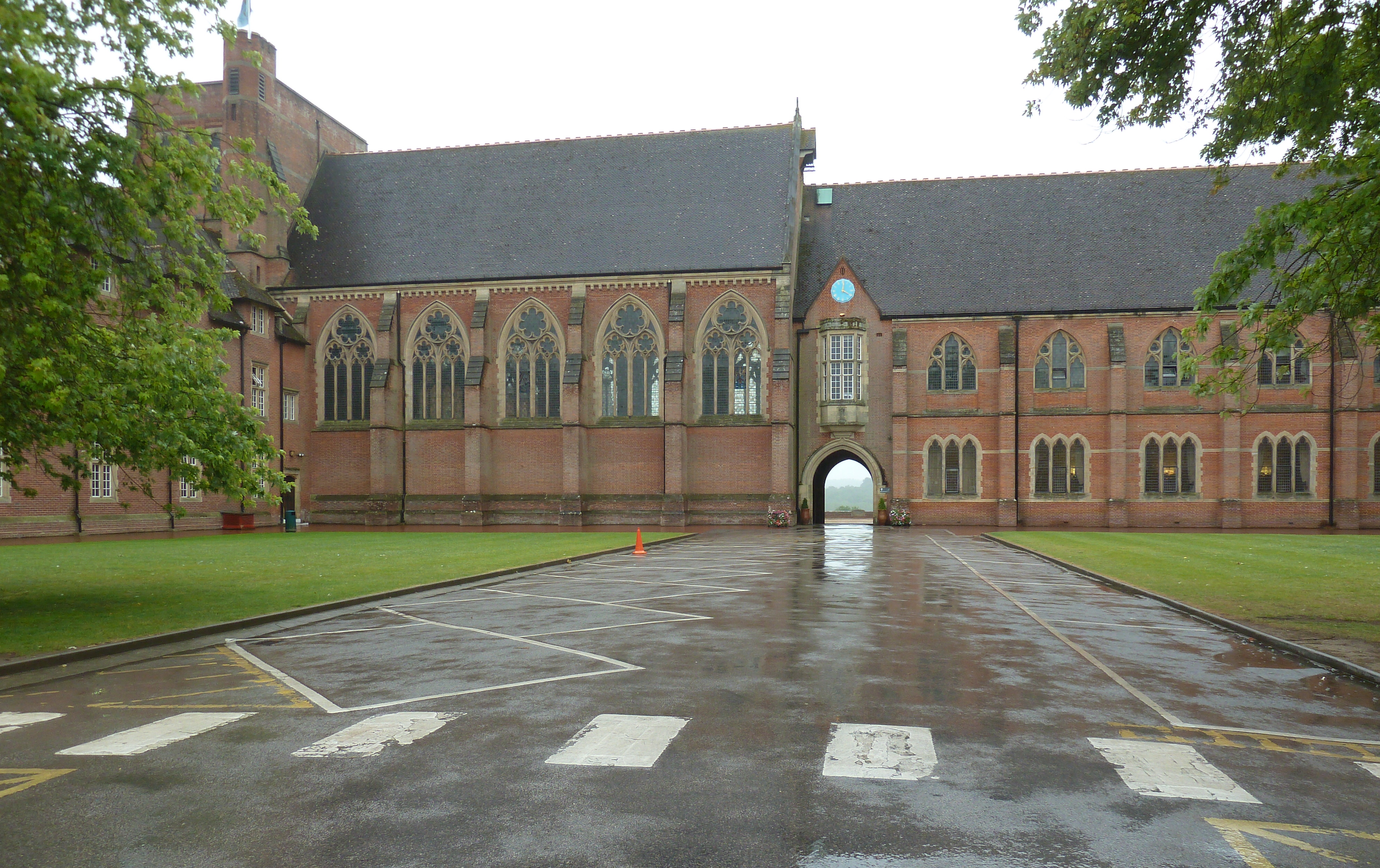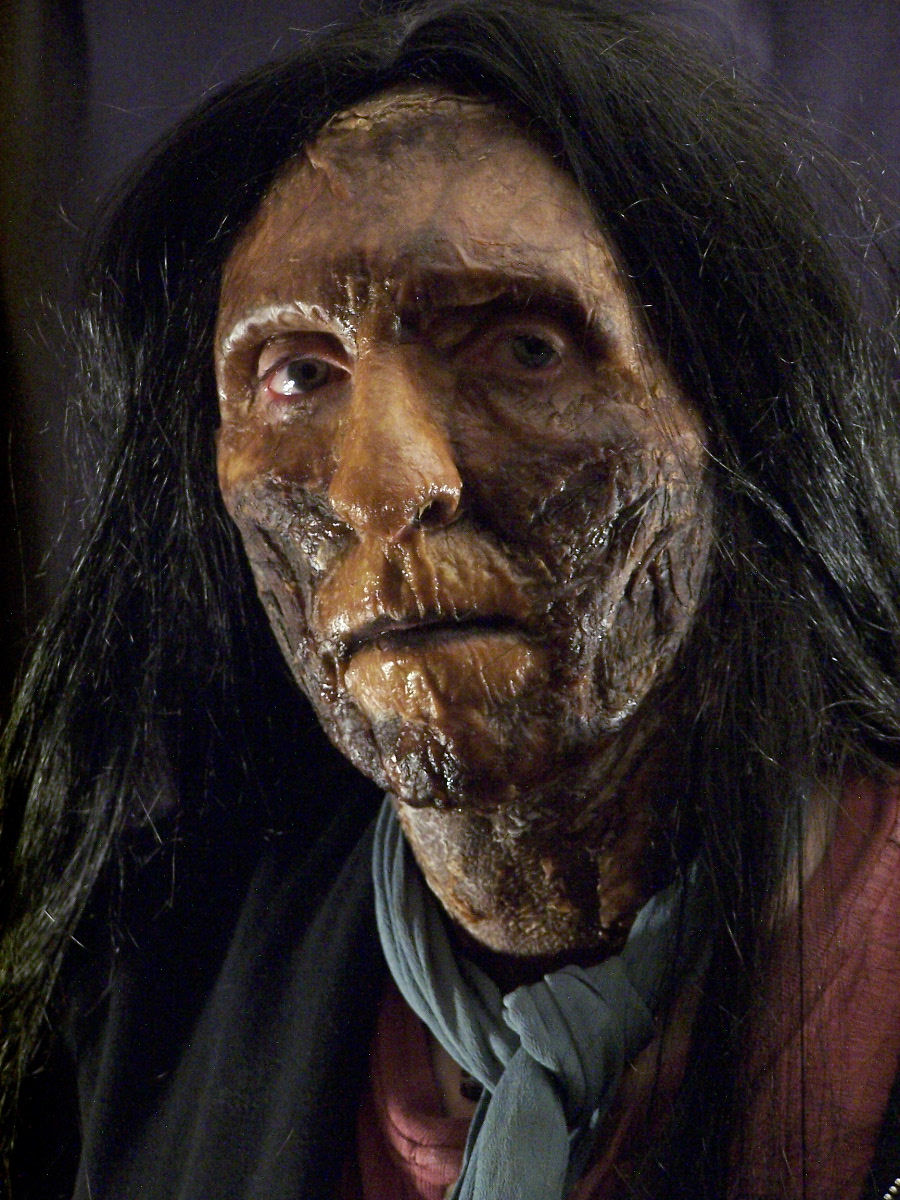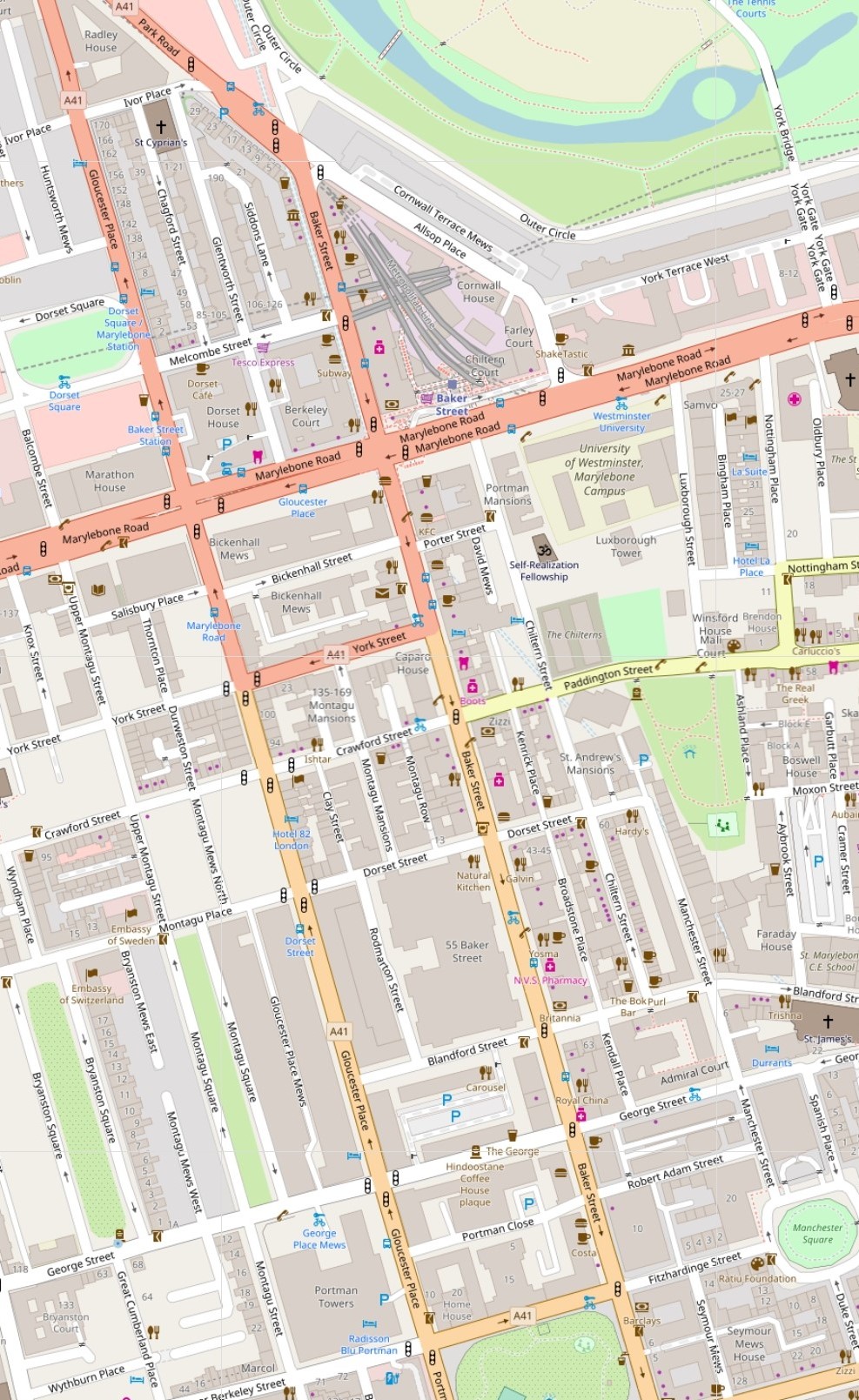|
A Study In Emerald
"A Study in Emerald" is a short story written by British fantasy and graphic novel author Neil Gaiman. The story is a Sherlock Holmes pastiche transferred to the Cthulhu Mythos universe of horror writer H. P. Lovecraft. Gaiman describes it as "Lovecraft/Holmes fan fiction". It won the 2004 Hugo Award for Best Short Story. The title is a reference to the Sherlock Holmes novel ''A Study in Scarlet''. "A Study in Emerald" first appeared in the anthology ''Shadows Over Baker Street'', a collection of stories combining the worlds of Arthur Conan Doyle and H. P. Lovecraft; it has subsequently been available as part of Gaiman's short story collection ''Fragile Things'', in the collection ''New Cthulhu: The Recent Weird'', and is available online. The online version takes the form of a Victorian periodical or newspaper, which includes various advertisements that reference characters such as Vlad Tepes, Victor Frankenstein, Spring Heeled Jack, and Dr. Jekyll. In the introduction to ... [...More Info...] [...Related Items...] OR: [Wikipedia] [Google] [Baidu] |
Neil Gaiman
Neil Richard MacKinnon GaimanBorn as Neil Richard Gaiman, with "MacKinnon" added on the occasion of his marriage to Amanda Palmer. ; ( Neil Richard Gaiman; born 10 November 1960) is an English author of short fiction, novels, comic books, graphic novels, nonfiction, audio theatre, and films. His works include the comic book series '' The Sandman'' and novels '' Stardust'', '' American Gods'', ''Coraline'', and '' The Graveyard Book''. He has won numerous awards, including the Hugo, Nebula, and Bram Stoker awards, as well as the Newbery and Carnegie medals. He is the first author to win both the Newbery and the Carnegie medals for the same work, ''The Graveyard Book'' (2008). In 2013, ''The Ocean at the End of the Lane'' was voted Book of the Year in the British National Book Awards. It was later adapted into a critically acclaimed stage play at the Royal National Theatre in London, England that ''The Independent'' called "...theatre at its best". Early life Gaiman's f ... [...More Info...] [...Related Items...] OR: [Wikipedia] [Google] [Baidu] |
Victor Frankenstein
Victor Frankenstein is a fictional character and the main protagonist and title character in Mary Shelley's 1818 novel, ''Frankenstein, Frankenstein; or, The Modern Prometheus''.. He is an Italians, Italian-Swiss scientist (born in Naples, Italy) who, after studying chemical processes and the decay of Organism, living things, gains an insight into the creation of life and gives life to his own creature (often referred to as Frankenstein's monster, or often colloquially referred to as simply "Frankenstein"). Victor later regrets Playing God (ethics), meddling with nature through his creation, as he inadvertently endangers his own life and the lives of his family and friends when the creature seeks revenge against him. He is first introduced in the novel when he is seeking to catch the monster near the North Pole and is saved from near death by Robert Walton and his crew. Some aspects of the character are believed to have been inspired by 17th-century alchemist Johann Konrad Dippe ... [...More Info...] [...Related Items...] OR: [Wikipedia] [Google] [Baidu] |
Great Old One
American author H. P. Lovecraft (1890–1937) created a number of fictional deities throughout the course of his literary career. These entities are usually depicted as immensely powerful and utterly indifferent to humans who can barely begin to comprehend them, though some entities are worshipped by humans. These deities include the "Great Old Ones" and extraterrestrials, such as the "Elder Things", with sporadic references to other miscellaneous deities (e.g. Nodens). The "Elder Gods" are a later creation of other prolific writers who expanded on Lovecraft's concepts, such as August Derleth, who was credited with formalizing the Cthulhu Mythos. Most of these deities were Lovecraft's original creations, but he also adapted words or concepts from earlier writers such as Ambrose Bierce, and later writers in turn used Lovecraft's concepts and expanded his fictional universe. Great Old Ones An ongoing theme in Lovecraft's work is the complete irrelevance of humanity in the face of t ... [...More Info...] [...Related Items...] OR: [Wikipedia] [Google] [Baidu] |
Baker Street
Baker Street is a street in the Marylebone district of the City of Westminster in London. It is named after builder William Baker, who laid out the street in the 18th century. The street is most famous for its connection to the fictional detective Sherlock Holmes, who lived at a fictional 221B Baker Street address on the north of the street. The area was originally high class residential, but now is mainly occupied by commercial premises. Location Baker Street is a busy thoroughfare, lying in postcode areas NW1/W1 and forming part of the A41. It used to run south from Regent's Park, the junction with Park Road, parallel to Gloucester Place, meeting Marylebone Road, Portman Square and Wigmore Street. In 2019, the until-then one-way street was changed to accommodate lanes running in both directions. At the junction with Wigmore Street, Baker Street turns into Orchard Street, which ends when it meets with Oxford Street. After Portman Square the road continues as Orchard Street ... [...More Info...] [...Related Items...] OR: [Wikipedia] [Google] [Baidu] |
Scotland Yard
Scotland Yard (officially New Scotland Yard) is the headquarters of the Metropolitan Police, the territorial police force responsible for policing Greater London's 32 boroughs, but not the City of London, the square mile that forms London's historic and primary financial centre. Its name derives from the location of the original Metropolitan Police headquarters at 4 Whitehall Place, which also had an entrance on a street called Great Scotland Yard. The Scotland Yard entrance became the public entrance, and over time "Scotland Yard" has come to be used not only as the name of the headquarters building, but also as a metonym for both the Metropolitan Police Service itself and police officers, especially detectives, who serve in it. ''The New York Times'' wrote in 1964 that, just as Wall Street gave its name to New York's financial district, Scotland Yard became the name for police activity in London. The force moved from Great Scotland Yard in 1890, to a newly completed build ... [...More Info...] [...Related Items...] OR: [Wikipedia] [Google] [Baidu] |
Inspector Lestrade
Detective Inspector G. Lestrade, or Mr. Lestrade ( or ), is a fictional character appearing in several of the Sherlock Holmes stories written by Arthur Conan Doyle. Lestrade's first appearance was in the first Sherlock Holmes story, the novel ''A Study in Scarlet'', which was published in 1887. The last story in which he appears is the short story "The Adventure of the Three Garridebs", which was first published in 1924 and was included in the last collection of Sherlock Holmes stories by Doyle, ''The Case-Book of Sherlock Holmes''. Lestrade is a determined but conventional Scotland Yard detective who consults Sherlock Holmes on many cases, and is the most prominent police character in the Sherlock Holmes series. Lestrade has been played by many actors in adaptations based on the Sherlock Holmes stories in film, television, and other media. Appearances in canon Lestrade is also mentioned in the novel ''The Sign of the Four'' (1890), though he doesn't appear in it. Fiction ... [...More Info...] [...Related Items...] OR: [Wikipedia] [Google] [Baidu] |
Albion
Albion is an alternative name for Great Britain. The oldest attestation of the toponym comes from the Greek language. It is sometimes used poetically and generally to refer to the island, but is less common than 'Britain' today. The name for Scotland in most of the Celtic languages is related to Albion: ''Alba'' in Scottish Gaelic, ''Albain'' (genitive ''Alban'') in Irish language, Irish, ''Nalbin'' in Manx language, Manx and ''Alban'' in Welsh language, Welsh and Cornish language, Cornish. These names were later Latinisation of names, Latinised as ''Albania'' and Anglicisation, Anglicised as ''Albany'', which were once alternative names for Scotland. ''New Albion'' and ''Albionoria'' ("Albion of the North") were briefly suggested as name of Canada, names of Canada during the period of the Canadian Confederation. Sir Francis Drake gave the name New Albion to what is now California when he landed there in 1579. Etymology The toponym is thought to derive from the Greek word , L ... [...More Info...] [...Related Items...] OR: [Wikipedia] [Google] [Baidu] |
The League Of Extraordinary Gentlemen
''The League of Extraordinary Gentlemen'' (''LoEG'') is a comic book series (inspired by the 1960 British film ''The League of Gentlemen'') co-created by writer Alan Moore and artist Kevin O'Neill which began in 1999. The series spans four volumes, an original graphic novel, and a spin-off trilogy of graphic novella. '' Volume I'' and '' Volume II'' (released as two six-issue limited series) and the graphic novel '' Black Dossier'' were published by the America's Best Comics imprint of DC Comics. After leaving the America's Best imprint, the series moved to Top Shelf and Knockabout Comics, which published '' Volume III: Century'' (released as three graphic novella), the '' Nemo Trilogy'' (a spin-off of three graphic novella centered on the character of Nemo), and '' Volume IV: The Tempest'' (originally released as a six-issue limited series). According to Moore, the concept behind the series was initially a "Justice League of Victorian England" but he quickly developed it as an o ... [...More Info...] [...Related Items...] OR: [Wikipedia] [Google] [Baidu] |
Alan Moore
Alan Moore (born 18 November 1953) is an English author known primarily for his work in comic books including ''Watchmen'', ''V for Vendetta'', ''The Ballad of Halo Jones'', ''Swamp Thing'', ''Batman:'' ''The Killing Joke'', and ''From Hell''. He is widely recognised among his peers and critics as one of the best comic book writers in the English language. Moore has occasionally used such pseudonyms as Curt Vile, Jill de Ray, Brilburn Logue, and Translucia Baboon; also, reprints of some of his work have been credited to The Original Writer when Moore requested that his name be removed. Moore started writing for British underground and alternative fanzines in the late 1970s before achieving success publishing comic strips in such magazines as '' 2000 AD'' and ''Warrior''. He was subsequently picked up by DC Comics as "the first comics writer living in Britain to do prominent work in America", where he worked on major characters such as Batman ('' Batman: The Killing Joke'') ... [...More Info...] [...Related Items...] OR: [Wikipedia] [Google] [Baidu] |
Kim Newman
Kim James Newman (born 31 July 1959) is an English journalist, film critic and fiction writer. Recurring interests visible in his work include film history and horror fiction—both of which he attributes to seeing Tod Browning's ''Dracula (1931 English-language film), Dracula'' at the age of eleven—and alternative history, alternative fictional versions of history. He has won the Bram Stoker Award, the International Horror Guild Award, and the BSFA award. Early life Kim Newman was born 31 July 1959 in Brixton, London, the son of Bryan Michael Newman and Julia Christen Newman, both potters.Kim James Newman. ''Contemporary Authors Online'', Gale (publisher), Gale, 2007. His sister, Sasha, was born in 1961, and their mother died in 2003. Newman attended "a progressive kindergarten and a primary school in Brixton, and then Huish Episcopi County Primary School in Langport, Somerset." In 1966 the family moved to Aller, Somerset. He was educated at Dr. Morgan's Grammar School for Boy ... [...More Info...] [...Related Items...] OR: [Wikipedia] [Google] [Baidu] |
Wold Newton Family
The Wold Newton family is a literary concept derived from a form of crossover fiction developed by the American science fiction writer Philip José Farmer. Origins In real life a meteorite, called the Wold Cottage meteorite, fell near Wold Newton, Yorkshire, England, on December 13, 1795. Farmer suggested in two fictional biographies, '' Tarzan Alive: A Definitive Biography of Lord Greystoke'' (1972) and '' Doc Savage: His Apocalyptic Life'' (1973) that this meteorite caused genetic mutations in the occupants of two passing coaches due to ionization. Many of their descendants were thus endowed with extremely high intelligence and strength, as well as an exceptional capacity and drive to perform good or, as the case may be, evil deeds. The progeny of these travellers are purported to have been the real-life originals of fictionalised characters, both heroic and villainous, over the last few hundred years. Members As well as Tarzan and Doc Savage, both Lord Peter Wimsey and ... [...More Info...] [...Related Items...] OR: [Wikipedia] [Google] [Baidu] |





